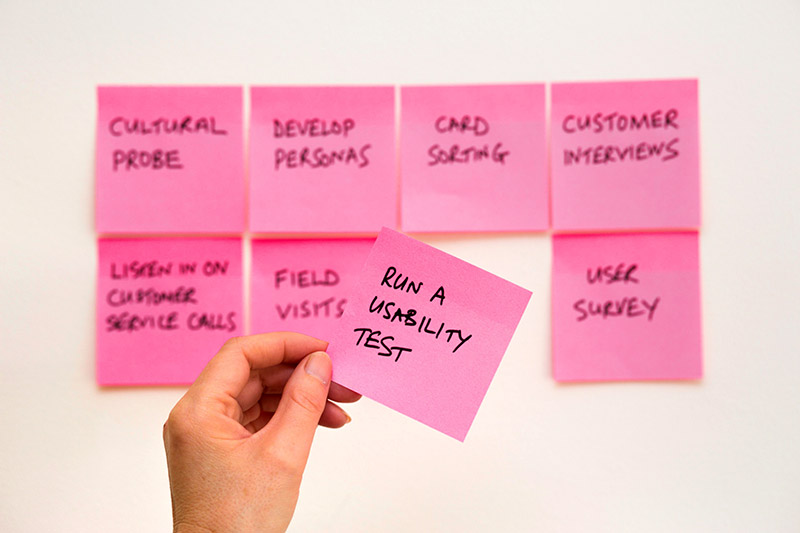
What is Usability Testing?
Usability testing stands as a cornerstone in the realm of user experience, providing invaluable insights into how real users interact with a product and, consequently, evaluating its ease of use. This customer-centric practice, often interchangeably referred to as user experience testing, involves engaging users in completing tasks while closely observing their interactions. Beyond the surface, usability testing delves into the intricacies of design, uncovering potential pitfalls, bugs, and minor issues that could impede a seamless user experience. This meticulous examination offers a unique opportunity to validate prototypes, ensuring they align with the needs and preferences of the intended user base.
Essential Components of Usability Testing
The effectiveness of usability testing hinges on its fundamental elements: tasks, participants, and facilitators.
Tasks – Defined as activities users are likely to perform in real-life scenarios, tasks vary in specificity, depending on the focus of the usability testing. Clear instructions, whether verbal or textual, play a crucial role in mitigating ambiguity and confusion.
Participants – Representative users tasked with executing set activities form the core of usability testing. The ideal participant mirrors the intended user demographic and is encouraged to articulate their thought process aloud, providing valuable insights into their actions.
Facilitator – The facilitator oversees the usability testing, assigning tasks, gathering feedback, and observing participant behavior. Probing questions and addressing queries contribute to the facilitator’s role in extracting meaningful insights.
Forms of Usability Testing
Usability testing manifests in both qualitative and quantitative approaches, each offering a unique perspective on user experience.
Qualitative Testing – This approach involves observing users in real-time, gaining insights into their interactions with a product through open-ended tasks. Qualitative testing strives to understand user perspectives, collecting anecdotes that contribute to a holistic understanding of user behavior.
Quantitative Testing – Taking a more indirect route, quantitative testing relies on metrics such as time on task and task success to gauge the user experience. This approach aligns with a data-driven evaluation, providing measurable insights into the efficiency and effectiveness of a product.
Methods of Usability Testing
Usability testing can take various forms, accommodating both qualitative and quantitative methodologies:
- In-Person Testing – Conducted onsite with both the facilitator and participant present, in-person testing allows for nuanced observations of body language and subtle cues. While more time-consuming and resource-intensive, it offers a comprehensive understanding of user interactions.
- Remote Testing – In contrast, remote testing involves the facilitator and participant being in separate locations. Embraced for its cost-effectiveness and logistical ease, remote testing accommodates a more widespread and diverse participant pool.
- Moderated Testing – Facilitated by a moderator, this form of testing involves live interaction between the facilitator and participant. Whether conducted in-person or remotely, moderated testing provides a deeper understanding of user thought processes.
- Unmoderated Testing – This form lacks the live interaction associated with moderated studies. Participants carry out tasks independently, providing insights into their natural interactions with the product.
- Hallway Testing – A spontaneous form of usability testing, hallway testing involves approaching individuals in high-traffic areas to perform tasks or test a product. Random and requiring minimal planning, it offers a cost-effective way to gather immediate feedback.
What Usability Testing Is Not
It is essential to distinguish usability testing from other testing methodologies aimed at enhancing user experience:
- A/B Testing – While valuable for validation, A/B testing doesn’t constitute usability testing. It focuses on assessing different versions of a solution to determine the most effective one.
- Surveys, User Acceptance Testing, and Focus Groups – While these tools contribute to improving user experience, they do not exclusively fall under the umbrella of usability testing. Usability testing is distinctive in its emphasis on understanding user behavior during solution usage.
In essence, usability testing transcends traditional testing paradigms by immersing itself in the user experience, unraveling nuances that contribute to a refined, intuitive, and user-centric product. As technology continues to evolve, usability testing remains an indispensable tool for crafting solutions that resonate with users, providing a roadmap for iterative enhancements and sustained excellence in the digital landscape.